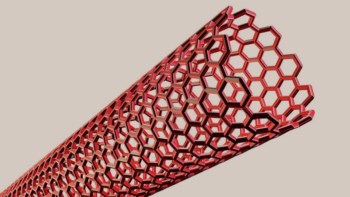
A team of UK scientists has shown how atomic-scale strengthening mechanisms observed in metals and alloys can be exploited to make 3D printed structures more robust. Mimicking the microcrystalline structure of metallic materials offers a novel way to engineer so-called architected materials, creating lightweight 3D structures that are stronger than ones that have been fabricated until now. This research also opens an avenue for modelling and observing complex phenomena in metallurgy.
In the same way as crystal structures have a lattice containing atoms and bonds, these architected materials replicate this lattice structure at a larger scale with a periodic arrangement of nodes and struts. Using this concept, 3D printing can be used to recreate a lattice structure at any scale.
So far, such architected materials have only been designed to follow a simple repeated unit cell oriented in a single direction. Most crystalline materials, however, are imperfect and are comprised of many grains with random orientation of the lattice. In this new work, materials scientists from Imperial College London and the University of Sheffield have mimicked this more realistic arrangement in 3D printed structures to test whether it results in stronger materials.
Their results confirm that the atomic mechanisms exploited in metallurgy to improve alloy strength also apply to these scaled up materials. For example, increasing the number of grains and reducing their size limits the distance that cracks can propagate through the material, and incorporating grains in an architected material made it much tougher than the researchers had anticipated. “We didn’t expect that massive increase in toughness,” comments lead author Minh-Son Pham. “We expected just a 2- or 3-fold increase but it could go up to 6 or 7 times.”
Other techniques explored for strengthening materials in metallurgy include precipitation and multiphase hardening. The former is used in alloys to increase yield strength, and the researchers incorporate precipitation in their architected materials by introducing small domains in which the lattice parameter is slightly different to that of the rest of the structure.
Taking inspiration from multiphase materials – in which different parts of the architected materials are constructed with distinct lattice types – is also beneficial. For example, a layered structure of body-centred cubic lattice sandwiched within a face-centred cubic structure was found to strengthen the resulting material while limiting plastic deformation to the middle layer.
According to Pham, a near-term application of this work could be in transport, specifically in personal cars. Such architected materials could be implemented in a car’s crumple zone, he says, which absorbs a lot of inertia upon impact. This would reduce vehicle weight to improve fuel efficiency, while also maintaining the safety of the driver and passengers.
This research is a stepping stone towards enhancing the performance of man-made materials, and also offers a better understanding of the relationship between material structure and properties. Indeed, Gang Soeb Jung and Marcus Buehler from the Laboratory for Atomistic and Molecular Mechanics, Massachusetts Institute of Technology, USA comment in an article for Nature that “architected materials could be used to study more complex hierarchical structures, such as those of silk and bone, to work out which features are responsible for the structures’ remarkable properties.”
Lead author Pham also sees an exciting future ahead, now that people are starting to fully realise the potential of 3D printing.
The full results are reported in Nature.



